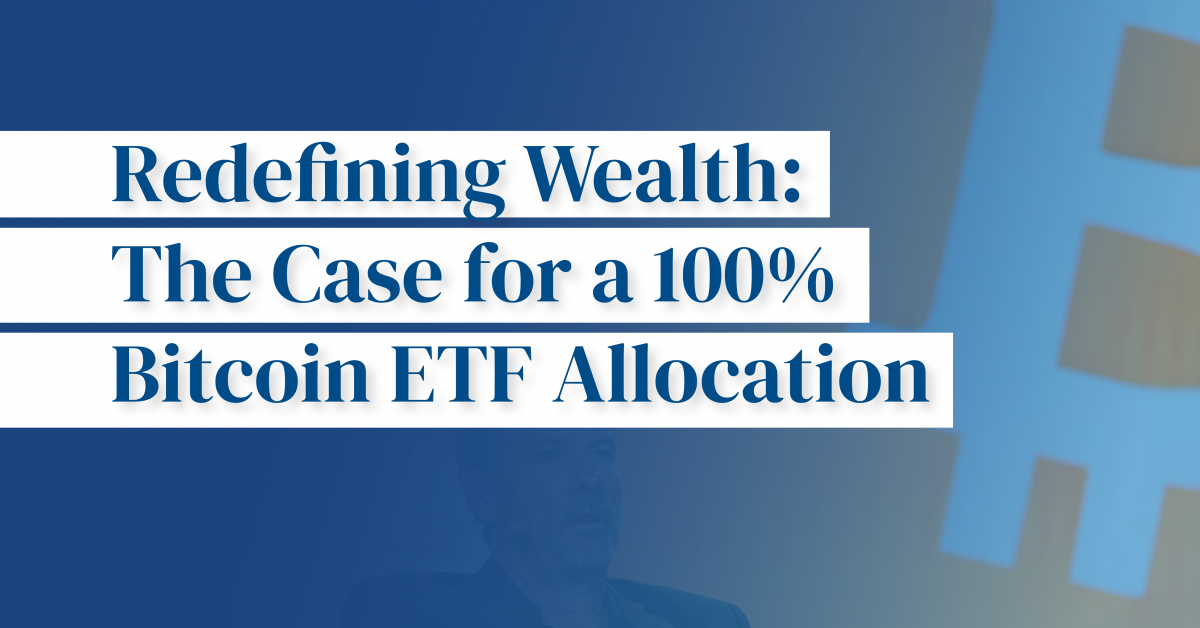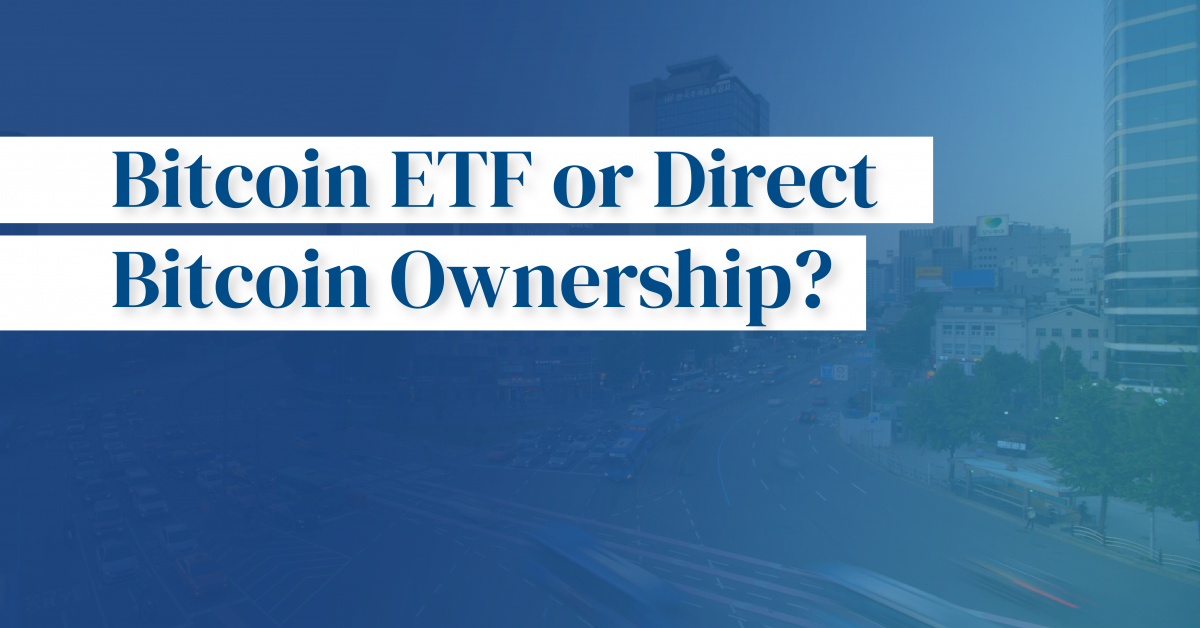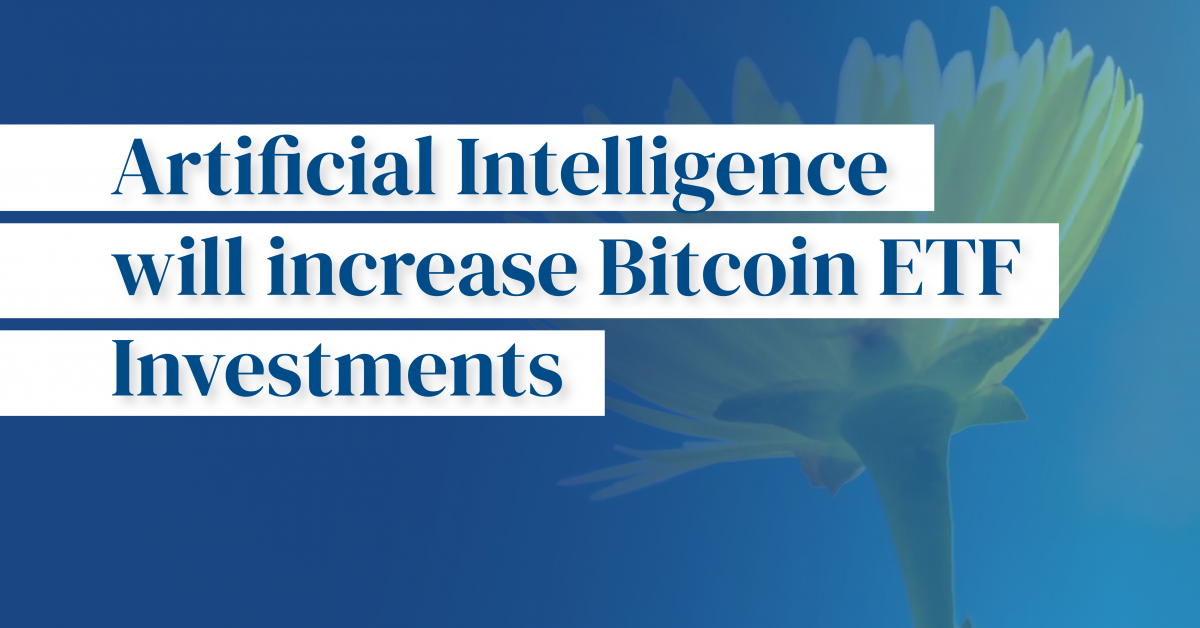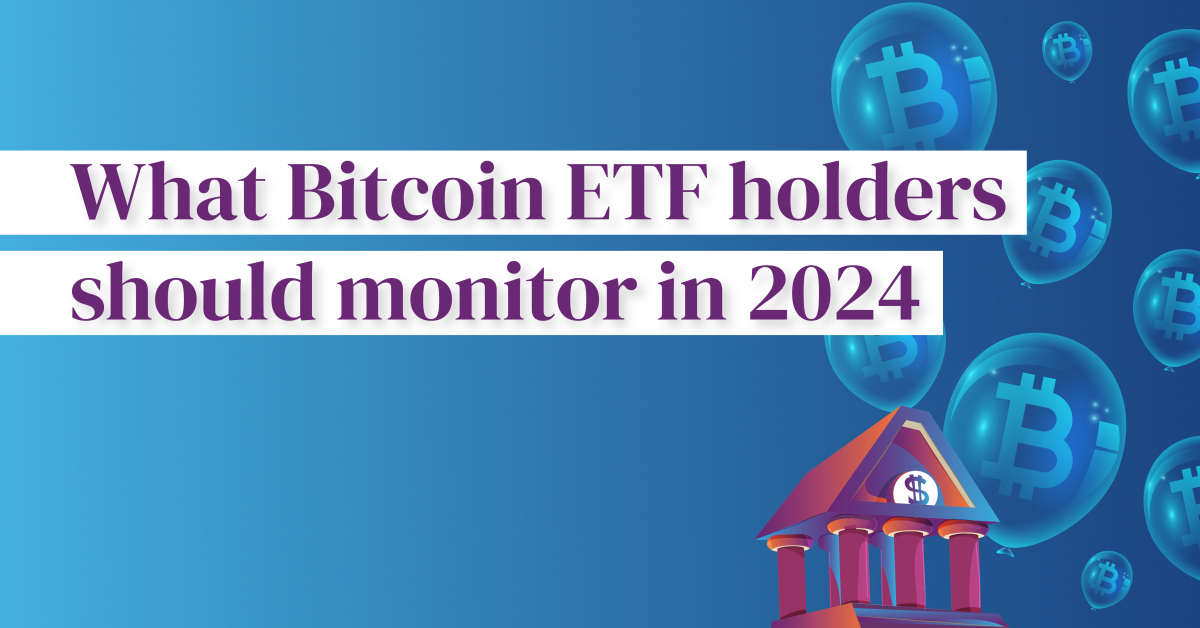The world of cryptocurrency investment is on the cusp of a significant evolution with the potential introduction of an Ethereum Spot Exchange-Traded Funds (ETFs). While the approval of Bitcoin ETFs marked a pivotal moment, the journey for Ethereum ETFs appears to be more intricate. This article delves into various factors that could influence the approval of Ethereum Spot ETFs in 2024, including unique challenges and opportunities they present.
SEC's Bitcoin ETF Approval and Its Implications
The U.S. Securities and Exchange Commission’s (SEC) approval of spot Bitcoin ETFs on January 10th 2024 has set a precedent in the cryptocurrency market. This decision, influenced by a federal appeals court ruling, was a game-changer, offering investors exposure to Bitcoin without directly holding it. However, this milestone wasn’t achieved without controversy. The SEC’s decision, which saw a split in voting among its commissioners (3 yes vs 2 no), indicates political and regulatory tensions that could also impact the fate of Ethereum ETFs.
See How Melanion Capital Can Guide You to Your Financial Wealth
We’ll explain everything you need to know about Bitcoin ETFs: from how they work, why investors are turning to them, and how they compare with other cryptocurrency investments.
The Unique Position of Ethereum
Ethereum, as a platform, holds distinct characteristics that set it apart from Bitcoin. These differences could form the crux of the SEC’s argument against a spot Ethereum ETF:
The regulatory classification of Ethereum compared to Bitcoin is a nuanced topic and hinges on several factors, not least of which is Ethereum’s origin through an Initial Coin Offering (ICO) and its ongoing development overseen by the Ethereum Foundation.
1.Initial Coin Offering (ICO): Ethereum’s ICO in 2014 was one of the first large-scale uses of such a funding mechanism in the crypto space. An ICO resembles traditional initial public offerings (IPOs) for stocks, which has led to debates on whether tokens issued through ICOs should be classified as securities. The Howey Test, a U.S. Supreme Court decision from 1946, is often used as a benchmark to determine whether a transaction qualifies as an “investment contract” and therefore should be considered a security. If a token is sold as an investment with the expectation of profits predominantly from the efforts of others, it might be classified as a security.
2.Ongoing Development: Unlike Bitcoin, which is largely considered leaderless and decentralized, Ethereum has been more visibly associated with its founders and the Ethereum Foundation. The presence of a leadership team that guides Ethereum’s development may contribute to a perception of centralization, potentially aligning it closer to the characteristics of a security. This is particularly relevant given that investors may expect the value of Ethereum to increase based on the efforts of the Foundation’s development work.
3.Regulatory Implications: If Ethereum is classified as a security, it would fall under a different regulatory framework, which includes stringent disclosure and registration requirements as per the regulations of the SEC. This could have wide-ranging implications for Ethereum’s trading, taxation, and the responsibilities of the Ethereum Foundation. Additionally, it would impact how Ethereum-based products, like ETFs, are marketed and managed.
In contrast, Bitcoin is often viewed as a commodity because it operates as a medium of exchange and a store of value without a central issuing authority or a group responsible for its development. As a result, Bitcoin has been able to sidestep the regulatory implications that come with being classified as a security.
The distinction between securities and commodities is critical because it determines the oversight and regulatory framework that applies to each asset. For commodities, the Commodity Futures Trading Commission (CFTC) is the primary regulatory body, while securities fall under the purview of the SEC.
Market maturity and volatility are important considerations when evaluating the potential for an Ethereum ETF. While Bitcoin is often referred to as “digital gold” and lauded for its pioneering role and relative market stability, Ethereum is perceived differently due to several factors:
Ethereum was launched in 2015, six years after Bitcoin. Although it is well-established in the cryptocurrency world, in the broader context of financial markets, it’s still a relatively young asset. This relative youth impacts how market participants view its maturity and stability.
Ethereum’s price has historically been more volatile compared to Bitcoin. While all cryptocurrencies exhibit volatility, Ethereum’s is heightened due to its more recent development changes and its role in various applications, such as decentralized finance (DeFi) and non-fungible tokens (NFTs), which are themselves emerging and volatile markets.
Ethereum’s transition from Proof of Work (PoW) to Proof of Stake (PoS) through the Ethereum 2.0 upgrade is a significant change in its underlying blockchain protocol. This shift is aimed at improving scalability and energy efficiency but also introduces new economic dynamics and potential risks. Market participants may require time to assess the impact of these changes on Ethereum’s market behavior and long-term viability.
Ethereum’s role as the leading platform for smart contracts and decentralized applications adds layers of complexity that Bitcoin does not have. The success and failure of the platforms and applications built on Ethereum can directly influence its market dynamics, adding a level of volatility that is unique to Ethereum.
Ethereum’s investor base may differ from Bitcoin’s due to its associated use cases like DeFi and NFTs. The speculative nature of these markets can lead to rapid inflows and outflows of capital, contributing to price volatility.
The SEC, when considering the approval of an Ethereum ETF, may weigh these factors heavily. The commission’s mandate includes ensuring investor protection and market efficiency, and higher volatility can translate to higher risk. From a regulatory perspective, the SEC must be satisfied that the market for the underlying asset of an ETF is resistant to manipulation and that the ETF would have a fair and orderly market.
The operational and technological risks associated with Ethereum’s shift from Proof of Work (PoW) to Proof of Stake (PoS) are significant factors that the SEC might consider when evaluating the viability of an Ethereum ETF. Here’s a deeper look at what this transition entails and its potential implications:
- Operational Dynamics: PoW, the original consensus mechanism of Ethereum, requires miners to solve complex mathematical problems to validate transactions and create new blocks. PoS, on the other hand, allows for the creation of new blocks to be based on the number of coins the validator is willing to “stake” as collateral. This shift alters the fundamental way in which the Ethereum blockchain reaches consensus and secures its network.
- Security Considerations: PoW has a proven track record for maintaining the security and integrity of blockchain networks. PoS is considered to be less energy-intensive, but it is relatively newer and thus less tested in terms of long-term security resilience. There are concerns about issues like the “Nothing at Stake” problem, where validators might have little incentive to maintain the network’s integrity.
- Decentralization and Influence: PoS could potentially lead to greater centralization since those with larger holdings can exert more influence over the network, which could introduce new risks for manipulation. This centralization risk is a critical consideration for the SEC, as it may increase the potential for market manipulation.
- Network Stability: Any major upgrade to a blockchain protocol carries the risk of unforeseen technical issues that could destabilize the network temporarily. Stability is a key consideration for an ETF’s underlying asset, and the SEC might be concerned about the potential for disruptions during or after Ethereum’s future transitions.
Operational and technological risks that could affect the price stability and market perception of Ethereum will be critically assessed to ensure that an Ethereum ETF, if approved, would not undermine these objectives. The assessment would also take into account the adequacy of measures to mitigate these risks, ensuring the resilience and reliability of Ethereum as an underlying asset for an ETF.
See How Melanion Capital Can Guide You to Your Financial Wealth
We’ll explain everything you need to know about Bitcoin ETFs: from how they work, why investors are turning to them, and how they compare with other cryptocurrency investments.
Political Backdrop and Regulatory Hesitance
The political backdrop plays a crucial role in shaping regulatory hesitance, particularly when it comes to financial oversight bodies like the SEC. After the SEC faced criticism from progressive Democrats for approving a Bitcoin ETF, there is a notable air of caution within the Commission regarding the approval of further cryptocurrency-based investment products like an Ethereum ETF.
Political pressure can influence the regulatory process, especially when it comes from influential groups or prominent political figures. Progressive Democrats have often advocated for strict regulatory frameworks to ensure investor protection, financial stability, and transparency. Their criticism of the Bitcoin spot ETF approval may signal to the SEC that similar crypto-related products could face heightened scrutiny.
SEC Chair Gary Gensler’s statement regarding the Bitcoin ETF approval, where he appeared reluctant but felt constrained by the court ruling, suggests that similar legal pressures could influence future decisions on Ethereum ETFs. He has also a reputation for being particularly cautious and methodical regarding cryptocurrency regulation and his reiteration of the risks associated with crypto assets in his statement can be mirrored in the analysis of Ethereum ETFs, underscoring the SEC’s risk-aware approach which could lead to hesitation in approving an Ethereum ETF.
His approach is to prioritize investor protection and to ensure that the crypto market complies with existing financial regulations. While he had publicly acknowledged that Bitcoin is not a security, he has refused to qualify Ethereum. This leaves him the option to reinforce his conservative stance on crypto ETFs, leading to a more rigorous review process for an Ethereum ETF.
Election cycles often bring about increased scrutiny of regulatory decisions as officials and regulatory bodies may avoid taking actions that could be perceived as controversial or that might alienate key voter demographics. With elections on the horizon, the SEC might be more hesitant to approve novel products like an Ethereum ETF, which could be contentious or could sway political support.
In sum, the political climate, especially surrounding crypto regulation, is a balancing act. The SEC must navigate between fostering innovation and responding to concerns about the potential risks associated with new financial products. The complex interplay between regulatory caution, political pressures, and the need for political support shapes the SEC’s approach to cryptocurrency ETFs and could lead to a more tentative path forward for an Ethereum ETF.
See How Melanion Capital Can Guide You to Your Financial Wealth
We’ll explain everything you need to know about Bitcoin ETFs: from how they work, why investors are turning to them, and how they compare with other cryptocurrency investments.
Ethereum Spot ETF: a non-event?
The narrative surrounding an Ethereum Spot Exchange-Traded Fund (ETF) has been one of cautious skepticism. Several indicators suggest that investor appetite for such a product may be subdued, particularly when compared to the interest historically shown in Bitcoin investment vehicles.
Grayscale’s Ethereum trust, the largest ether investment product globally, has 6 billion dollars of Assets Under Management (AUM). An AUM substantially lower than the 30 billion that were on the Bitcoin Trust. This weak investor commitment could signal a broader market sentiment that may cause Grayscale to hesitate in pursuing the same aggressive legal route for an Ethereum ETF that it took for Bitcoin. The costs associated with such legal efforts might not be justifiable given the smaller discount on the Ethereum Trust, which stands at around 10%, compared to the more significant discount previously observed with the Bitcoin Trust.
The launch of Bitcoin Futures ETFs was met with great fanfare and interest, yet the same cannot be said for the Ethereum counterparts. Indeed, as reported by the Financial Times, Ethereum Future ETFs “fizzled” on their first day of trading attracting only 6,6 million dollars of combined trading volume, contrasting sharply with the 1 billion dollars mark the Bitcoin Futures ETF reached in volume on its first day of trading. Same applies for the Ethereum Futures listed on CME, with an open interest dwarfing the one of Bitcoin Futures (approx. 10x). This discrepancy in investor enthusiasm underscores a potential shift in preference towards Bitcoin-centric products, which are perceived as more secure and stable investments.
Since Ethereum’s move to a Proof of Stake model, its market share has been consistently declining. This trend can be partially attributed to a preference among investors for ‘energy-based’ cryptocurrencies like Bitcoin, which are viewed as more akin to ‘hard money’ in contrast to the ‘oligarch-based’ PoS systems, which could replicate power dynamics seen in traditional fiat systems. Bitcoin’s energy-intensive Proof of Work is seen by some investors as a guarantee of its security and intrinsic value, contrasting with concerns about the centralization risks of Ethereum’s PoS model.
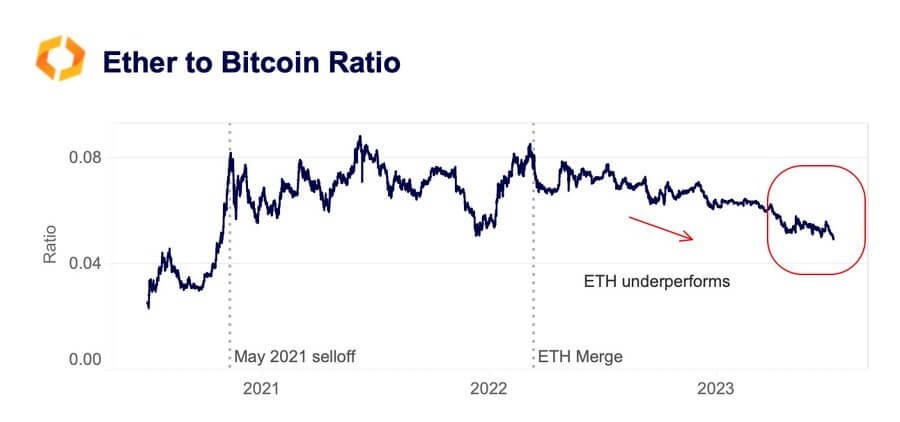
Source: Kaiko hourly asset prices
The cryptocurrency landscape is evolving rapidly, with new protocols emerging that challenge Ethereum’s dominance. Competitors, like Solana, are not only capturing market share but also offering innovative features and efficiencies that Ethereum has yet to integrate or improve upon. This competitive pressure could render Ethereum less attractive to investors looking for growth and innovation.
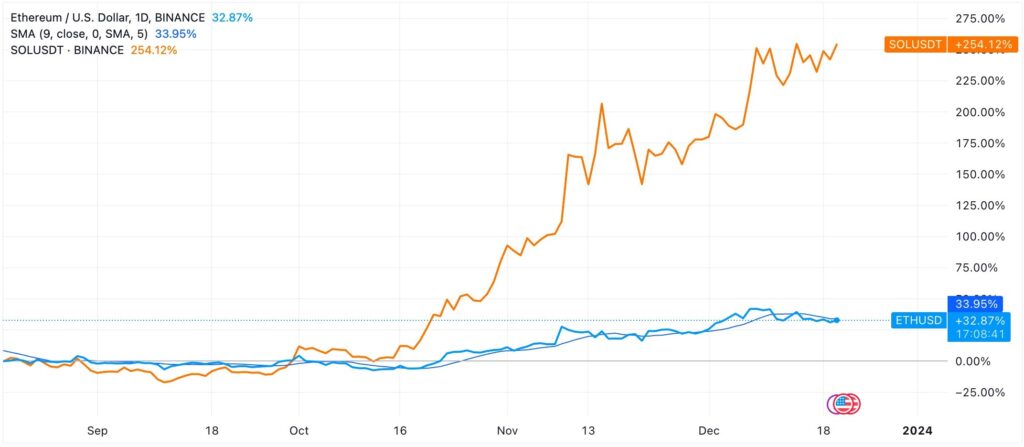
Source: TraidingView
Considering this, the prospect of an Ethereum Spot ETF garners less excitement among investors who may view Bitcoin ETFs as a safer and more promising avenue for cryptocurrency exposure. As the investment landscape for digital assets continues to mature, Bitcoin’s established market presence and regulatory acceptance may overshadow the potential and innovation that Ethereum offers, at least for the near future.
If not Ethereum, what to monitor for 2024?
In light of the complexities and challenges outlined, it is prudent to consider a possible conclusion: the pathway to an Ethereum Spot ETF may be riddled with too many obstacles to make it a viable option in the near future. The political climate, regulatory landscape, and inherent risks associated with Ethereum’s technology could deter the SEC from granting approval. These factors add to the fact that investors feel better served by focusing on Bitcoin ETFs, which have already cleared significant regulatory hurdles and offer a more established investment framework.
As we look ahead to 2024, we believe the new kid on the block is most probably Bitcoin Equities. We have always argued, since the launch of the Melanion Bitcoin Equities ETF in 2021, that investors should look beyond a Bitcoin ETF, as the investment theme is much more interesting in the cryptocurrency landscape.
Investors looking to integrate cryptocurrency into their portfolios, while still adhering to a traditional diversified investment approach, may find a compelling case for Bitcoin Equities.
Bitcoin Equities represent an emerging sector that offers exposure to the cryptocurrency space without direct investment in the tokens themselves. These equities are linked to the performance of companies that are heavily invested in Bitcoin or are integral to the Bitcoin ecosystem, such as mining operations, financial firms offering crypto services, or technology providers in the blockchain space.
The maturity of Bitcoin as an asset, coupled with a decade of market presence, has given investors a clearer picture of its behavior in various economic conditions. This historical perspective, combined with Bitcoin’s growing acceptance among institutional investors, may position Bitcoin Equities as a noteworthy consideration.
In conclusion, considering the regulatory uncertainty surrounding Ethereum and the technological and operational shifts it is undergoing, Bitcoin Equities could provide a balance between the dynamic potential of cryptocurrencies and the structured world of equities, making them a noteworthy focus for investors navigating the evolving digital asset landscape in 2024.
Investing in funds involves risks, including the risk of capital loss. The value of an investment is subject to market fluctuations and may therefore go down as well as up. As a result, fund investors may lose all or part of the capital they originally invested.




